
Florence is a town, 61 miles (98 km) southeast of Phoenix, in Pinal County, Arizona, United States. Florence, which is the county seat of Pinal County, is one of the oldest towns in that county and is regarded as a National Historic District with over 25 buildings listed on the National Register of Historic Places. The population of Florence was 26,785 at the 2020 census.
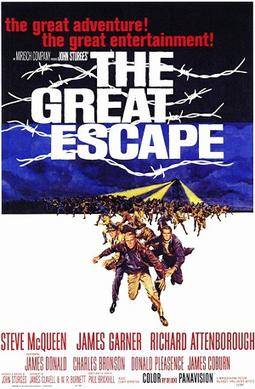
The Great Escape is a 1963 American war adventure film starring Steve McQueen, James Garner and Richard Attenborough and featuring James Donald, Charles Bronson, Donald Pleasence, James Coburn, Hannes Messemer, David McCallum, Karl-Otto Alberty, Gordon Jackson, John Leyton and Angus Lennie. It was filmed in Panavision, and its musical score was composed by Elmer Bernstein.
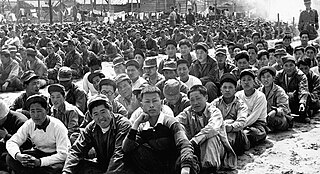
A prisoner-of-war camp is a site for the containment of enemy fighters captured by a belligerent power in time of war.
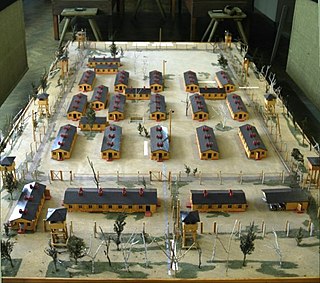
Stalag Luft III was a Luftwaffe-run prisoner-of-war (POW) camp during the Second World War, which held captured Western Allied air force personnel.

The Wooden Horse is a 1950 British Second World War war film directed by Jack Lee and starring Leo Genn, David Tomlinson and Anthony Steel. It is based on the book of the same name by Eric Williams, who also wrote the screenplay.

Island Farm, also called Camp 198, was a prisoner of war camp on the outskirts of the town of Bridgend, South Wales. It hosted a number of Axis prisoners, mainly German, and was the scene of the largest escape attempt by German POWs in Britain during World War II. Near the end of the war it was renamed Special Camp XI and used to detain many senior SS military leaders who were awaiting extradition to the Nuremberg trials.

Werner Drechsler was a German U-boat crewman during World War II. He served on U-118, which was sunk off the Azores in 1943. When he was taken prisoner he enthusiastically cooperated with his captors, likely since his father had been sent to a Nazi concentration camp as a political prisoner.

Papago Park is a municipal park of the cities of Phoenix and Tempe, Arizona, United States. It has been designated as a Phoenix Point of Pride. It includes Hunt's Tomb, which is listed on the National Register of Historic Places.
In April 1941, inmates at the Angler POW Camp near Neys Provincial Park on the north shore of Lake Superior planned the largest escape from a Canadian POW camp during World War II. The escape was the largest of its kind in Ontario, Canada.
Danger Within is a 1959 British war film set in a prisoner of war camp in Northern Italy during the summer of 1943. A combination of POW escape drama and whodunit, the movie is based upon the 1952 novel Death in Captivity by Michael Gilbert, who had been a prisoner of war held by the Italians at PG 49 in Fontanellato.
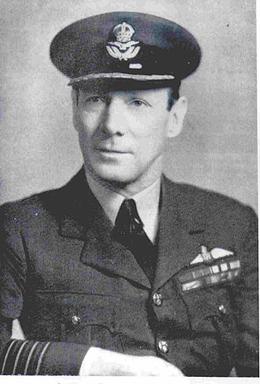
Harry Melville Arbuthnot Day, was a Royal Marine and later a Royal Air Force pilot during the Second World War. As a prisoner of war, he was senior British officer in a number of camps and a noted escapee.
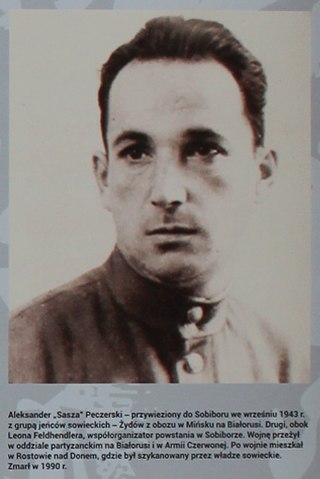
Alexander 'Sasha' Pechersky was one of the organizers, and the leader, of the most successful uprising and mass-escape of Jews from a Nazi extermination camp during World War II, which occurred at the Sobibor extermination camp on 14 October 1943.
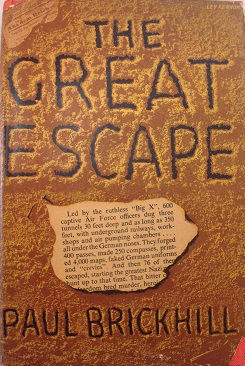
The Great Escape is a 1950 book by Australian writer Paul Brickhill that provides an insider's account of the 1944 mass escape from the German prisoner of war camp Stalag Luft III for British and Commonwealth airmen. As a prisoner in the camp, he participated in the escape plan but was debarred from the actual escape 'along with three or four others on grounds of claustrophobia'. The introduction to the book is written by George Harsh, an American POW at Stalag Luft III. This book was made into the 1963 film The Great Escape.

Operation Kiebitz was a failed German operation during World War II to organize the escape of four skilled U-boat commanders from a Canadian prisoner of war camp in Bowmanville, Ontario. The subsequent counter operation by the Royal Canadian Navy, Operation Pointe Maisonnette, became a key engagement in the Battle of the St. Lawrence and was also successful in thwarting the Germans' plan.

Syrets was a Nazi concentration camp established in 1942 in Kyiv's western neighborhood of Syrets, part of Kyiv since 1799. The toponym was derived from a local small river. Some 327 inmates of the KZ Syrets were forced to remove all traces of mass murder at Babi Yar.

The Clovis, New Mexico jail break refers to an August 24, 2008 jail escape from the Curry County Adult Detention Center.

Members of the German military were interned as prisoners of war in the United States during World War I and World War II. In all, 425,000 German prisoners lived in 700 camps throughout the United States during World War II.
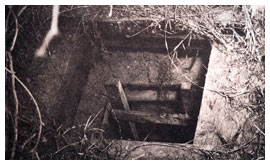
The Great Papago Escape was the largest Axis prisoner-of-war escape to occur from an American facility during World War II. On the night of December 23, 1944, twenty-five Germans tunneled out of Camp Papago Park, near Phoenix, Arizona, and fled into the surrounding desert.
















